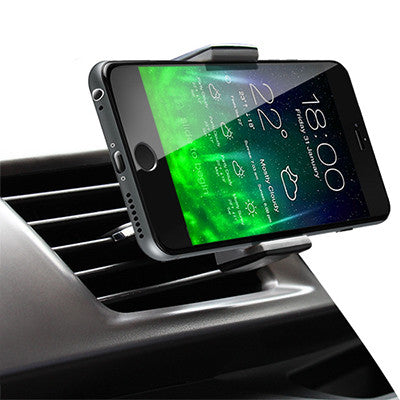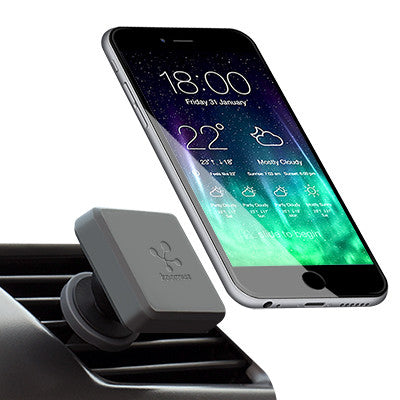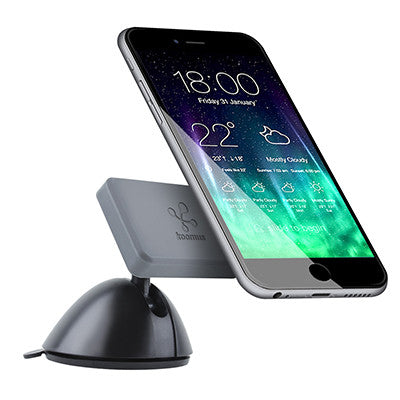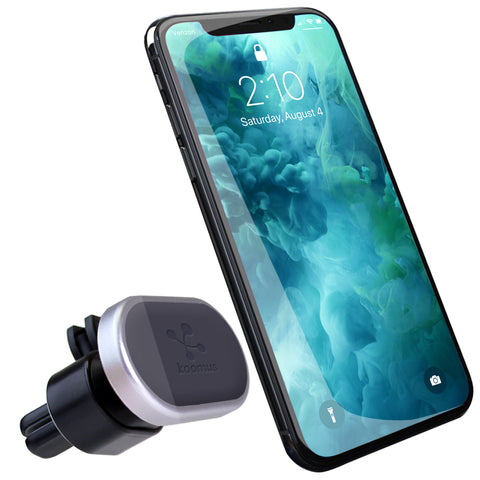- Continue Shopping
- Your Cart is Empty
Your Guide to the Best VIN Lookup
The fastest way to run a VIN number lookup is right from your smartphone, no computer needed. Just scan the VIN using a mobile app or website, and you'll instantly see if the vehicle has been in accidents, marked as salvage, recalled, or stolen. This guide shows how to use both free and paid VIN lookup tools on your phone, step by step, to avoid bad deals and make smarter decisions at the lot or during a test drive.
What Does a VIN Lookup Mean?
A vehicle identification number is a unique 17-character ID stamped on every passenger vehicle. An analysis decodes that string and aggregates history from public and private data sources. You’ll see basic information, recall status, accident history, and potential salvage or total loss events. This check is a smart first step before buying a used car. Many tools also check mileage patterns to flag suspicious jumps.
- Confirms the identifier matches the car on-site.
- Surfaces vehicle history information across jurisdictions.
- Flags insurance companies' claims, liens, and service records.
- Helps you verify a VIN before money changes hands.
Automotive industry research shows shoppers who review reports negotiate prices 10–15% more effectively on average.
User-Friendly VIN Lookup: Why Mobile Access Matters
You don’t need a desktop to run a VIN check. Phone-based tools scan the vehicle’s VIN, display decoded specs, and save a report during a test drive. That means you can check claims immediately and compare candidates in real time. Mobile access shortens the search and speeds decisions at auctions and lots. It’s ideal when daylight or time is limited.
- Quick camera scan of the vehicle's VIN and barcode.
- GPS time-stamped notes for each used car you inspect.
- Shareable PDFs for lenders or insurers.
- Works in low-signal areas with offline caching.
Shoppers using on-phone scanning report skipping 30–50% of unsuitable listings before any in-person visit.
How to Use a VIN Lookup Tool on Your Smartphone
Most tools are straightforward. Open the app or website, allow camera permission, and aim at the barcode on the door jamb or windshield. If you can’t find a car’s VIN, check the registration or insurance card. Choose the VIN check options you need, then export the full report so you can review it later.
- Open your preferred VIN check tool or app.
- Tap Scan; frame the barcode or enter digits manually.
- Check alerts for recalls, title issues, liens, and salvage.
- Save the report includes screen as a PDF for records.
- Tag notes so you can check before buying a used model.
Free VIN Lookup Tools You Can Use on Your Phone
These free services offer free analyses that reveal essential basics. Use them as free options to filter cars fast, then select a paid service for deeper data before any commitment.
NICB VINCheck
NICB’s VINcheck tool taps theft and total loss records submitted by participating insurance companies. It’s quick and ideal for a first-pass check on a used vehicle. While it doesn’t replace a detailed vehicle history, it helps you avoid obviously risky cars at auctions and private sales. The service offers a free report as a highly practical screen.
- Theft check against participating insurers.
- Salvage/loss indicators.
- Simple mobile page for checking a car’s VIN.
- The service offers a free VIN check before deeper research.
NHTSA Recall Lookup
The National Highway Traffic Safety Administration operates a recall website that lets you enter a VIN to see open safety campaigns. It’s essential for buying a used car, since open recalls reduce value and may affect safety. You’ll also see manufacturer actions requiring dealer visits. NHTSA is authoritative for recall history and completion status.
- Official recall check by VIN.
- Remedy details and parts availability.
- Recall history with closure status.
- Clear mobile instructions and links to service.
EpicVIN's Free VIN Decoder
EpicVIN’s decoder is widely regarded as the most reliable no-cost tool that gives quick, on-the-lot insight. Use it when you want to check specs, engine, trim, and build specs immediately. VIN can also be saved with photos and notes for later evaluation. It’s perfect when you need a VIN number lookup during fast-moving shopping days.
- Free version for specs, equipment, and manufacturing details.
- Trim and engine check to avoid mislistings.
- Fast phone scan and export to a deeper report.
- Smart step before any paid VIN check or inspection.
Best Paid VIN Lookup Services Compared
When paying for a VIN check service, choose a provider of vehicle history reports with broad data, a clear layout, and good value. Below are the leaders and how their vehicle history report services differ in practice.
Carfax
Carfax is widely recognized by lenders and dealers. If you need a brand familiar to finance offices, it’s a strong option. Reports are readable, with timeline-style history and easy event markers. Pricing is higher per report, but bundles can reduce cost when comparing several candidates.
- Broad vehicle details, including maintenance sessions and registrations.
- Strong dealer acceptance and shareable links.
- Damage and accident history with context.
- Useful when you get a vehicle history report for financing.
AutoCheck
Backed by Experian, AutoCheck emphasizes a comparative score that helps rank similar listings. It’s handy for sorting a long shortlist quickly. If you’re scanning auctions or fleets, the score identifies which cars deserve in-person attention first.
- Score that compresses vehicle history into a comparable index.
- Solid auction and fleet data integrations.
- Multi-report bundles at competitive prices.
- Integrates with dealer systems to speed search.
EpicVIN's Full Vehicle History Report
EpicVIN focuses on clarity, depth, and affordability. Use it when you want detail without overpaying. It blends vehicle information, recall context, and available images. An affordable VIN package lets shoppers evaluate more cars without stretching the budget. This company balances depth and value for everyday buyers.
- Detailed vehicle history report with title and odometer checks.
- Photos and prior listing traces when available; downloadable VIN report.
- Cost-effective bundles and clean summaries.
- Strong choice if you need a reliable VIN full report.
Paid vs Free: Which VIN Lookup Option Is Best for You?
Free tools are perfect for screening theft, salvage, and recalls. A paid platform adds ownership chains, lien monitoring, prior listings, and granular odometer trails. If you’re purchasing a used car, start at no cost and upgrade when the car still looks promising. Always check disclosures against paperwork and a mechanic’s inspection. A VIN check before buying helps you avoid costly reconditioning surprises.
|
Feature |
Free VIN Tools |
Paid Options |
|
Theft/total loss check |
Often yes (NICB) |
Yes, with sources and dates |
|
Open recalls |
NHTSA only |
Integrated timelines |
|
Ownership/title history |
Limited |
Full chains across states |
|
Odometer/rollbacks |
Minimal |
Pattern analysis with alerts |
|
Auction/photos |
Rare |
Common when available |
|
Value support |
Basic |
Strong for lenders |
|
Best use |
Fast filter |
Decision-grade diligence |
How to Scan a VIN with Your Smartphone Camera
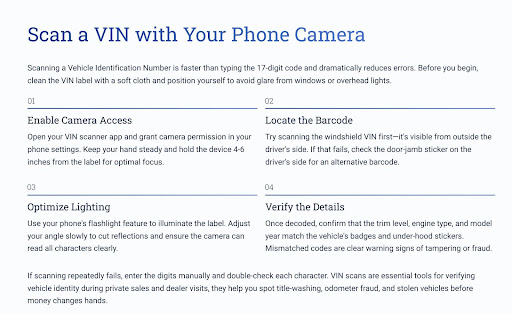
What to Do After Running a VIN Lookup
Once you have results, compare them to the seller’s account. If the report includes maintenance records, review receipts and dates. For negative events, weigh repair costs and bargaining leverage. If the car still appeals, schedule a pre-purchase inspection and keep the VIN report on file. Next, get a vehicle history report if you started with a no-cost analysis.
- Match decoded specs to photos and options.
- Confirm ownership and lien status before payment.
- Ask for receipts supporting service history.
- Use findings to negotiate or walk away.
- Save PDFs and emails for future reference.
Common Issues When Using VIN Tools on Your Phone
Mobile scanning isn’t perfect. Old labels fade, aftermarket glass can distort barcodes, and some imports use non-standard placements. An app may flag “invalid” due to a transposed digit or a pre-1981 identifier. If stuck, switch to manual entry and cross-verify documents to catch common mistakes.
|
Problem |
Likely Cause |
Quick Fix |
|
“Invalid VIN” |
Typo or digit swap |
Re-scan; manual entry; compare to registration |
|
Won’t scan |
Glare or damage |
Change angle; clean label; try door-jamb sticker |
|
No data found |
Older or non-US format |
Use a plate-based check or import records |
|
Trim mismatch |
Wrong decode |
Compare RPO codes; request build sheet |
|
Partial VIN |
Pre-1981 format |
Use chassis/engine numbers with documents |
Summary
A thorough VIN check is a smart step that helps reveal the story behind any used car's past. Start with NICB and NHTSA to get a free VIN check, then upgrade to EpicVIN for deeper detail. Mobile scanning streamlines on-lot diligence, while paid VIN checks provide decision-grade evidence. If you want to check only one comprehensive source, EpicVIN’s paid service balances coverage, clarity, and value for today’s market.
FAQ
Can VIN Lookup Tools Detect Odometer Rollbacks?
Yes. Paid platforms compare title dates, inspection logs, and images to check for mileage jumps. They often spot patterns a mechanic can confirm. That’s why a good vehicle history report helps during any evaluation.
What Do I Do If My VIN Has Fewer Than 17 Characters?
Pre-1981 vehicles may have shorter identifiers. Modern decoders can’t validate them the same way, but you can still research with care.
- Use chassis or engine numbers and factory records.
- Request seller documents and invoices.
- Contact marque clubs or archives.
- Hire a specialist to authenticate.
Can I Verify Auction History Using Just a Smartphone VIN Scan?
Often, yes. Some tools surface prior auction photos and lane events after a scan. Quality varies, but leading providers frequently reveal listings and condition notes, making paying for a check worthwhile on borderline candidates.
Do VIN Lookup Services Work for International Vehicles?
Coverage depends on region and vehicle age. Many tools parse North American formats best. For imports, check local registries, customs forms, and maker databases. Expect partial history and arrange an in-country inspection before purchasing a used vehicle abroad.
What If the Mobile App Says "Invalid VIN"?
Re-scan and verify confusing characters like O/0 and I/1. If it persists, enter manually and compare to the paperwork. Try another app. When in doubt, check with the DMV; some errors stem from legacy data-entry mistakes.

